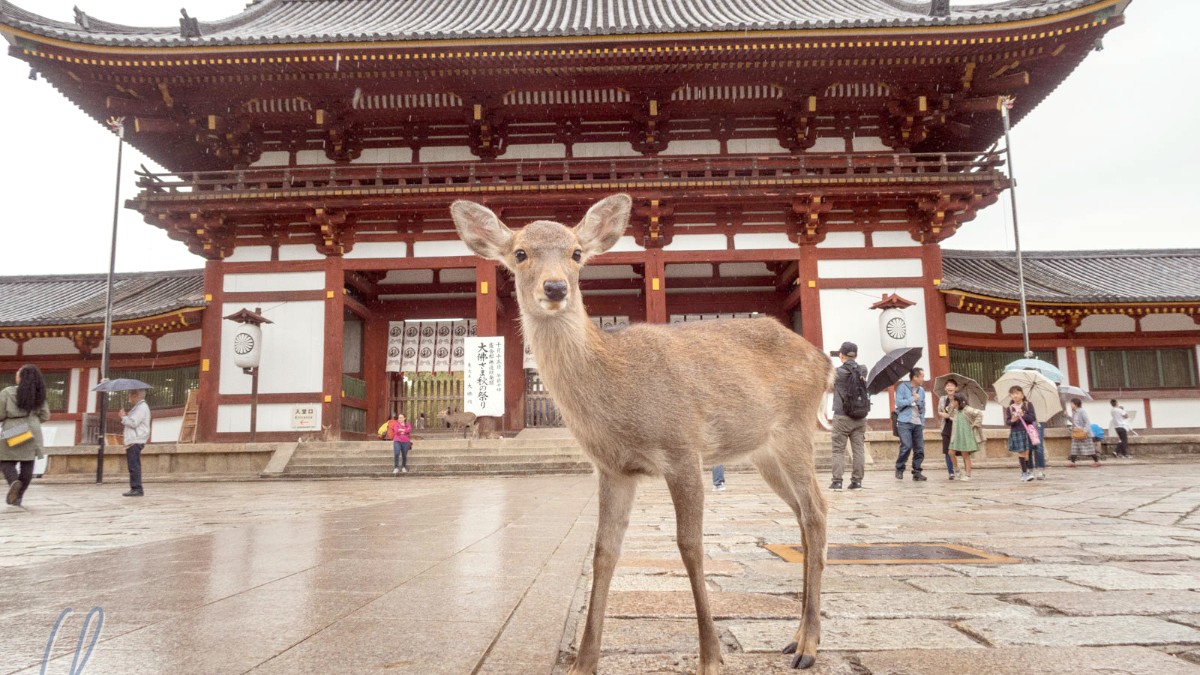
Kansai, Japan
Nara's cuisine takes influence from its ancient capital history and Buddhist temples. Buddhist vegetarian cuisine, Shojin ryori, is present, reflecting spiritual roots.
Nara is one of sake's birthplaces. This long history shapes culinary traditions here.
Nara dishes highlight fresh local produce, rice, and soybeans for tofu and miso. Kudzu starch is a local specialty.
Flavors are balanced, savory, and rich in umami, accentuating natural ingredient tastes.
Less prominent than in coastal areas, seafood is still present in some dishes.
Sushi wrapped in persimmon leaves. The leaves act as a natural preservative and share a subtle flavor to the sushi, typically mackerel or salmon.
Find at specialty shops and department stores.
Tea gruel. This traditional Nara breakfast dish consists of rice simmered in green tea. A gentle, comforting start to the day.
Served at some Ryokans and traditional eateries.
Very thin wheat noodles from the Miwa region. Known for fine, delicate texture. Served cold with dipping sauce in summer or hot in light broth in winter.
Widely available in local restaurants.
Deer crackers for feeding Nara Park's wild deer. Not for human eating.
Freshly pounded Yomogi mochi and steamed buns with sweet bean paste fillings.
Restaurants and Ryokans present traditional Kaiseki multi-course dining with seasonal ingredients and intricate presentation.
Abundant choices with a variety of Japanese cuisine: ramen, udon, tempura, tonkatsu, and Izakayas (Japanese pubs).
Find quick and affordable meals at convenience stores and shopping arcades.
Becoming more common, but careful searching and communication remain important. Shojin ryori (Buddhist vegetarian cuisine) stands as a notable choice.
Look for marked options or ask clearly.
Navigating gluten-free dining can pose challenges, as soy sauce frequently contains wheat. Cross-contamination also poses a concern.
Carry allergen cards in Japanese.
Google Translate, etc.
For vegetarian/vegan dining.
Especially for specific needs.
Find suitable restaurants in advance.
Check local event calendars for traditional festivals and food-related performances.
Mantoro (lantern lighting) at Kasuga Taisha.
Many events feature temporary food stalls selling local delicacies.
A great way to sample diverse regional flavors.
Visit stores specializing in Nara-specific food products. These are ideal for gifts or to enjoy at your accommodation.
Japan maintains high food safety standards. Enjoy street food and restaurant meals with confidence.
Japanese pubs serving small dishes and drinks. Great for a social evening.
Fresh seafood preparations, from casual conveyor belt to high-end Omakase.
Crispy, deep-fried pork cutlet, a satisfying and popular dish.
Some temples house small cafes offering refreshments and light meals in a tranquil environment.
Peaceful ambiance after sightseeing.
The old merchant district features Machiya (traditional townhouse) converted into cafes and restaurants.
Quaint settings and local charm.
Many smaller food stalls and traditional eateries prefer cash payments.
Nara's cuisine emphasizes seasonal ingredients, reflecting agricultural cycles.
Picture menus or translation apps assist communication in many establishments.
Always carry some cash, as many smaller food stalls and traditional eateries prefer it.